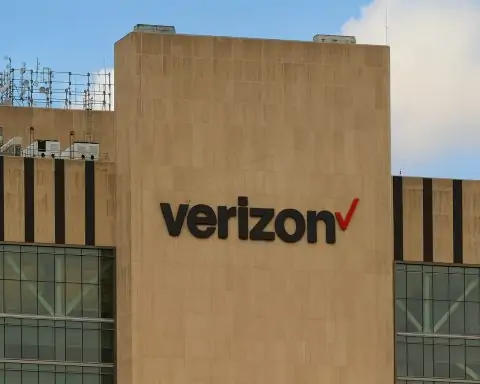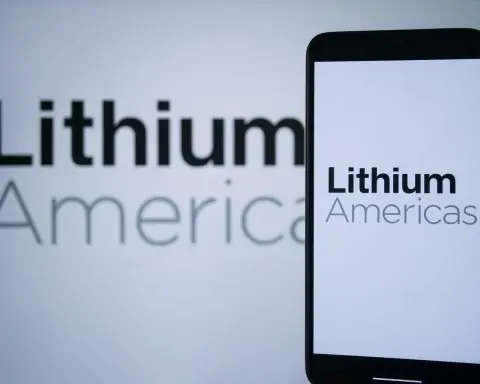- Surging stock price: Microsoft’s stock (NASDAQ: MSFT) jumped 1.5% to $531.52 at Monday’s close (Oct. 27) [1] – its highest level since late summer and just ~4% below its all-time high (~$555). The rally boosts Microsoft’s market capitalization to about $3.8 trillion [2], cementing it as one of the world’s most valuable companies (second only to Apple by market cap) [3]. Shares are now up roughly 25% year-to-date, handily outpacing the broader market [4].
- Earnings on deck: Microsoft will report earnings on October 29, 2025, and expectations are high. Analysts forecast ~$75–76 billion in fiscal Q1 revenue (≈15% YoY growth) and ~$3.65–3.66 EPS [5]. The company has beaten earnings estimates in 9 of the past 10 quarters [6], though investors will watch closely for Azure cloud growth and any impact of massive AI investments on profit margins.
- Wall Street bullishness:Analyst sentiment is overwhelmingly positive.32 of 34 Wall Street analysts rate MSFT a “Buy,” with consensus 12-month price targets around $620–$630 (implying ~15–20% upside) [7]. Top bulls even see $650+ ahead, and none recommend selling the stock [8]. Wedbush’s Dan Ives, for example, argues Microsoft could ultimately reach a $5 trillion valuation as its AI initiatives scale [9].
- AI & cloud drive growth: Microsoft’s rally is fueled by booming cloud and AI momentum. Azure cloud revenue has been growing ~34–39% year-over-year [10], far outpacing rivals (Amazon Web Services ~17%, Google Cloud ~32% in the latest quarter) [11]. To extend its lead, Microsoft is investing billions in AI infrastructure – in October it inked a 5-year, $17.4 billion supercomputer deal to secure 100k+ Nvidia GPUs [12] and joined a $40 billion consortium (with Nvidia and BlackRock) to acquire Aligned Data Centers [13], massively expanding capacity for AI workloads.
- Big news this month:October 2025 has been eventful for Microsoft. The company unveiled new AI-powered Surface “Copilot” PCs (including its first 5G-enabled Surface laptop) at a Dubai tech expo, showcasing on-device AI features for business users [14]. It also announced a partnership with the London Stock Exchange Group to feed 33 petabytes of financial data into Microsoft 365 Copilot AI services [15], and rolled out localized cloud infrastructure to host AI Copilot services in the Middle East [16]. Meanwhile, Microsoft addressed a key regulatory overhang in Europe – EU regulators accepted its plan to unbundle Teams from Office 365 (with adjusted pricing) to resolve an antitrust probe [17], likely averting hefty fines. A new U.S. class-action lawsuit was filed alleging its OpenAI partnership stifled competition, but Microsoft insists the deal “promotes competition” in AI [18].
- Upbeat but mindful outlook:Investor sentiment remains upbeat amid the AI frenzy. “Microsoft is becoming more of a cloud infrastructure business and a leader in enterprise AI,” observes Gerrit Smit of Stonehage Fleming [19], reflecting a view that Microsoft will be a prime winner of the AI revolution. Broader market trends are also providing a tailwind – cooling inflation and the prospect of Fed interest rate cuts have boosted high-growth tech stocks like Microsoft [20]. Still, valuations are elevated: MSFT trades around 28× forward earnings [21], a historically high multiple. Bulls argue Microsoft’s strong fundamentals (robust cash flows, double-digit growth) justify the premium [22], but any stumble in growth or surging AI costs could trigger a pullback [23]. In short, optimism is high, but so are expectations.
Stock Near Record Highs on AI Momentum
Microsoft’s stock has been on a tear in recent weeks, climbing to its highest levels in months on the back of strong optimism around artificial intelligence. As of October 28, 2025, MSFT is trading in the low-$530s per share – up from the ~$520 range a week ago and not far from its record peak. On Monday, the stock surged 1.5% to close at $531.52 [24], bringing Microsoft’s market cap to roughly $3.8 trillion [25]. This market value firmly ranks Microsoft among the world’s most valuable companies (trailing only Apple) [26]. Year-to-date, Microsoft shares have now gained about 25% [27] (and ~23% over the past 12 months [28]), outperforming the S&P 500 and Nasdaq indexes. For comparison, the tech-heavy Nasdaq is up ~22% in 2025, and rival mega-cap Amazon’s stock is barely positive (~3% YTD) [29] – underscoring Microsoft’s standout performance in the “AI rally.”
All-time high in sight: Microsoft’s current share price is within a few percent of its all-time closing high (around $554–555 reached in late July). The recent rally – which has added hundreds of billions of dollars to Microsoft’s market value – reflects investor excitement over the company’s growth prospects in cloud computing and AI services. “The bulls remain fully in charge,” one market strategist noted, as cooling inflation and rising hopes of Federal Reserve rate cuts have provided a “notable macro tailwind” lifting tech stocks like Microsoft [30]. In other words, the macro environment (easing interest rate pressures) is favoring richly valued growth stocks, and Microsoft’s strong fundamentals are giving investors further confidence to bid the stock near record highs.
Key Drivers: Cloud & AI Boom Fueling Microsoft’s Growth
Microsoft’s business is benefiting from powerful tailwinds in cloud and AI, which are the core themes behind the stock’s 2025 surge. In its latest quarter, Microsoft’s flagship cloud platform Azure grew revenue by roughly 39% year-over-year [31] – an acceleration that significantly outpaced cloud rivals. For context, Amazon’s AWS grew only ~17% and Google Cloud ~32% in the same period [32]. This suggests Microsoft continues to gain cloud market share at the expense of competitors. Azure’s robust growth has been the company’s “engine” lately, contributing to Microsoft’s overall 15% revenue growth in fiscal 2025 [33] [34]. Cloud computing demand remains strong as enterprises large and small invest in digital transformation and AI-powered services, an area where Microsoft is seen as a leader.
AI initiatives and investments: The excitement around Microsoft goes beyond just cloud market share – it’s also about AI everywhere. The company has aggressively positioned itself at the forefront of the AI boom, integrating generative AI and machine learning capabilities across its product portfolio (from Office 365 Copilot to GitHub Copilot to Windows and Azure AI services). In recent weeks, Microsoft has made headline-grabbing investments to ensure it has the infrastructure to support AI growth. Notably, Microsoft struck a 5-year, $17.4 billion deal with startup Nebius to secure access to over 100,000 Nvidia GPUs for AI supercomputing [35]. It also joined forces with Nvidia and BlackRock in a consortium to acquire Aligned Data Centers for ~$40 billion [36] – one of the largest data-center acquisitions ever – signaling a massive bet on expanding cloud capacity for AI workloads. These big expenditures underscore CEO Satya Nadella’s commitment to “go big” on AI. Nadella has described the current AI era as a “tectonic … platform shift” and reorganized Microsoft’s leadership this month to double down on AI opportunities [37]. In fact, on October 1 he promoted longtime executive Judson Althoff to a new role as CEO of Microsoft’s commercial business (overseeing ~75% of revenue), freeing Nadella to focus on “datacenter buildout, systems architecture, AI science, and product innovation” in order to “build the new frontier” of AI [38]. This leadership shakeup signals how central AI has become to Microsoft’s strategy.
New AI-powered products: Microsoft also used October to showcase how its AI investments are translating into new products and services. At the GITEX technology expo in Dubai (mid-October), the company unveiled a line of Surface “Copilot” PCs – including its first 5G-enabled Surface Laptop – that come with built-in AI co-pilot features designed for business productivity [39]. These new devices highlight Microsoft’s vision of embedding AI assistants directly into personal computers and software, positioning Windows and Surface hardware for an AI-centric future. Additionally, Microsoft announced that its flagship Microsoft 365 Copilot (an AI assistant for Office apps) will be supercharged with extensive financial market data through a partnership with the London Stock Exchange Group [40]. This deal gives Copilot access to 33 petabytes of LSEG data – enabling AI-driven insights for Excel, PowerPoint, and other apps using real-time market information. Microsoft further revealed plans to offer localized cloud instances for its AI services, launching local data hosting for 365 Copilot in the UAE to meet regional data sovereignty needs [41]. All told, these moves demonstrate Microsoft’s aggressive push to monetize AI across its product ecosystem, from cloud infrastructure to software to devices.
Gaming and other segments: Even beyond enterprise tech, Microsoft’s growth story extends into consumer and gaming. Its $69 billion acquisition of Activision Blizzard (closed in 2023) is now bolstering the Xbox division – Xbox content and services revenue jumped ~13% recently [42] as new gaming content and subscription offerings (like Game Pass) attract users. In October, Microsoft’s gaming unit also hinted at a strategic pivot to high-end hardware by unveiling a $999 premium Xbox handheld (the “Xbox Ally X”) and signaling that the next-gen Xbox console will be a very high-spec, premium device [43]. While these moves sparked some gamer backlash due to higher prices [44], Microsoft views it as an investment in the future of gaming, leveraging its partnership with AMD on advanced chips [45]. The strong performance in cloud, productivity software, and even gaming indicates that Microsoft is firing on multiple cylinders – a key reason investor sentiment remains positive.
Upcoming Earnings: Short-Term Catalyst and What to Watch
All eyes are now on Microsoft’s earnings report due Wednesday, Oct. 29. This fiscal Q1 2026 report (covering July–September 2025) is a crucial short-term catalyst for the stock. Analysts generally expect another quarter of solid growth, driven by Azure and AI. The consensus forecast calls for around $75.5 billion in revenue (approximately 15% higher than a year ago) and earnings of roughly $3.65 per share [46]. If achieved, that would extend Microsoft’s trend of double-digit growth and mark its 10th consecutive earnings beat (Microsoft has topped Wall Street’s EPS estimates in 9 of the last 10 quarters) [47]. Early indications are upbeat – Microsoft’s management previously signaled strong demand, and CFO Amy Hood warned that capital expenditures would hit a record ~$30 billion this quarter as the company builds out data centers for AI [48]. Such heavy investment suggests Microsoft is confident in continued growth, though it may weigh on margins in the near term.
Key things to watch in the earnings report and call will be: Azure’s growth rate (can it sustain ~35%+ YoY gains as guided, even on a larger base?), AI monetization updates (e.g. uptake of paid Copilot add-ons by enterprise customers), and outlook commentary for the holiday quarter and beyond. Any hints about how demand is trending for cloud services and AI products will be crucial. Microsoft’s management might also provide color on how the massive AI-related spending is expected to pay off in coming periods. Investors will be listening for guidance on operating margins given the spike in spending – the question is whether revenue is growing fast enough to offset those costs. Short-term risks: Even if Microsoft delivers a strong quarter, some analysts caution that the stock’s lofty expectations could lead to a “sell-the-news” scenario. Historically, Microsoft’s stock has not always popped on earnings beats – in fact, in 5 of the last 9 earnings releases, MSFT shares dipped in the immediate aftermath [49], sometimes because results were already priced in or guidance didn’t wow. With the stock near record highs, any slight disappointment or cautious forward guidance on the earnings call could spur profit-taking. Moreover, broader market factors (like rising Treasury yields or geopolitical events) could always sway short-term trading in mega-cap tech stocks. In the very near term, volatility is possible – but most analysts say any dips would likely be viewed as buying opportunities given Microsoft’s longer-term prospects.
Analyst Insights and Market Outlook
Wall Street’s verdict on Microsoft remains resoundingly bullish. Virtually every major analyst covering MSFT has a positive view – as noted, there are currently zero “Sell” ratings on the stock [50]. About 94% of analysts rate it a “Buy”, according to recent surveys [51], reflecting a rare “zero-sell” consensus in favor of the tech giant. The average 12-month price target across analysts is in the low-$600s (roughly $612–$620 depending on the source), which implies ~15% upside from current levels [52] [53]. Many analysts have been raising their targets in light of Microsoft’s AI momentum. For instance, UBS recently reiterated a Buy and lifted its target to ~$650, highlighting accelerating Azure growth trends [54]. Bank of America likewise projects upside into the mid-$600s, forecasting Azure ~39% growth and ~$77 billion in next-quarter revenue as part of its bull case [55] [56]. And as mentioned, Wedbush’s tech analyst Dan Ives has gone further, suggesting Microsoft could approach a staggering $5 trillion market cap in the coming years thanks to its dominant position in cloud and enterprise AI [57].
Several experts have commented that Microsoft’s unique positioning gives it multiple avenues for sustained growth. “Microsoft isn’t cheap – and may never be – but exceptional fundamentals justify the premium,” says John DiFucci of Guggenheim, noting that the company’s entrenched franchises (like Office) and cloud dominance warrant a higher valuation [58]. He and others point to two key drivers: Azure’s direct exposure to the AI wave (as companies pay for ever more cloud AI services on a subscription basis), and Microsoft’s ability to monetize AI through its Office 365 ecosystem – effectively upselling new AI features (Copilot) to a massive established user base [59]. This combination of cloud infrastructure and software dominance is something only Microsoft (and to a degree, Google) currently enjoy. “Microsoft is becoming more of a cloud infrastructure business and a leader in enterprise AI,” observes Gerrit Smit, a fund manager, emphasizing that Azure and AI services are transforming the company’s profile [60]. Even longtime segments like Windows and enterprise software are being refreshed with AI capabilities, which could extend their growth runway.
Another angle analysts highlight is Microsoft’s diversified resilience. The company has exposure to consumer tech, enterprise software, cloud, gaming, and now a stake in AI research via its partnership with OpenAI. This diversification means Microsoft can weather slowdowns in one area with strength in others. “The company remains resilient with diversified businesses,” one analyst noted, able to buffer the huge AI investments with cash flow from its other segments [61]. That said, no investment is without risks. Some experts urge caution that the current euphoria around AI could lead to a crowded trade – if growth in AI or cloud demand even slightly disappoints, highly valued stocks like MSFT could see a sharp correction [62]. Microsoft’s forward price-to-earnings ratio near 28× is well above its historical average [63], so it leaves less margin for error. Additionally, Microsoft’s aggressive spending on AI (tens of billions in CapEx) will need to translate into future profits to satisfy investors; if profit margins compress too much in the interim, the stock could come under pressure. Regulatory scrutiny is another wild card: while Microsoft dodged a bullet by settling the EU’s Teams bundling issue, global regulators are increasingly eyeing Big Tech’s market power (from app stores to cloud to AI), which could pose challenges or fines down the road. For now, these concerns are dwarfed by optimism – but they’re reasons that Microsoft’s progress will be watched carefully.
Long-Term Forecast: Is $600+ Within Reach?
Looking beyond the next quarter, most analysts agree that Microsoft’s long-term outlook is bright. The overarching theme is that we are in the early innings of a multi-year AI and cloud computing cycle, and Microsoft is exceptionally well positioned to capitalize on it. AI integration could unlock new revenue streams across Microsoft’s product lines – for example, charging businesses $30/user for Microsoft 365 Copilot add-ons, or driving Azure usage through AI model training and deployment. Early signs of monetization are promising (one report says Barclays purchased 100,000 Copilot licenses in Q4, indicating big enterprise uptake) [64]. Microsoft’s management is guiding for continued double-digit revenue growth, and if Azure maintains ~30%+ annual growth for the next few years (as some analysts project), hitting those lofty price targets may be achievable. Indeed, current Wall Street forecasts see Microsoft’s earnings rising at a ~15–20% annual pace in the next 1–2 years, which would support a stock price well into the $600s [65] [66]. The average analyst target of ~$620 implies that level by late 2026, and more bullish scenarios (like UBS’s $650 or Morgan Stanley’s ~$640) suggest even higher highs in the not-too-distant future [67] [68].
Can MSFT hit $600? If Microsoft continues executing as it has – growing Azure rapidly, expanding margins in its software businesses, and successfully launching new AI products – many experts say yes, it’s likely a matter of when, not if. The stock already briefly traded above $550 earlier this year, and the momentum from AI could drive another leg up. Short-term traders are cautious about the exact timing (especially with potential volatility around earnings or macroeconomic news), but the fundamental trajectory points upward. One portfolio manager, Jamie Murray of The Murray Wealth Group, went so far as to call Microsoft (and Google) “the standout picks of Q3 earnings season” among big tech, praising Microsoft’s “capital efficiency and operational excellence” and predicting its cloud growth could even approach 40% in upcoming quarters [69]. Such optimism underlies why virtually no one on Wall Street is betting against MSFT right now.
In summary, Microsoft enters late 2025 with remarkable momentum: near-record stock highs, accelerating cloud revenues, and an AI strategy that has captivated both investors and customers. The company’s short-term challenge will be justifying its valuation by delivering on high expectations in its earnings report and navigating the hefty costs of its AI ambitions. Longer-term, if the AI boom plays out as bullish analysts expect, Microsoft appears poised to ride that wave to new heights – potentially crossing the $600 mark and beyond in the coming year. As one commentator put it, “the bulls remain fully in charge” for now [70], and Microsoft’s playbook of strategic investments and innovation has the market betting that today’s pricey stock could still have significant upside left in the tank.
Sources: Microsoft stock data and historical prices [71]; TS2 Tech – TechStock² news and analysis [72] [73] [74] [75]; TradingKey market analysis [76] [77]; Reuters news reports [78].
References
1. stockanalysis.com, 2. ts2.tech, 3. ts2.tech, 4. ts2.tech, 5. www.tradingkey.com, 6. www.tradingkey.com, 7. ts2.tech, 8. www.tradingkey.com, 9. ts2.tech, 10. ts2.tech, 11. ts2.tech, 12. ts2.tech, 13. ts2.tech, 14. ts2.tech, 15. ts2.tech, 16. ts2.tech, 17. ts2.tech, 18. ts2.tech, 19. ts2.tech, 20. ts2.tech, 21. ts2.tech, 22. ts2.tech, 23. ts2.tech, 24. stockanalysis.com, 25. ts2.tech, 26. ts2.tech, 27. ts2.tech, 28. ts2.tech, 29. www.tradingkey.com, 30. ts2.tech, 31. ts2.tech, 32. ts2.tech, 33. ts2.tech, 34. ts2.tech, 35. ts2.tech, 36. ts2.tech, 37. ts2.tech, 38. ts2.tech, 39. ts2.tech, 40. ts2.tech, 41. ts2.tech, 42. ts2.tech, 43. ts2.tech, 44. ts2.tech, 45. ts2.tech, 46. www.tradingkey.com, 47. www.tradingkey.com, 48. ts2.tech, 49. www.tradingkey.com, 50. www.tradingkey.com, 51. www.tradingkey.com, 52. www.tradingkey.com, 53. ts2.tech, 54. ts2.tech, 55. ts2.tech, 56. ts2.tech, 57. ts2.tech, 58. www.tradingkey.com, 59. www.tradingkey.com, 60. ts2.tech, 61. ts2.tech, 62. ts2.tech, 63. ts2.tech, 64. ts2.tech, 65. ts2.tech, 66. ts2.tech, 67. ts2.tech, 68. ts2.tech, 69. www.tradingkey.com, 70. ts2.tech, 71. stockanalysis.com, 72. ts2.tech, 73. ts2.tech, 74. ts2.tech, 75. ts2.tech, 76. www.tradingkey.com, 77. www.tradingkey.com, 78. ts2.tech







